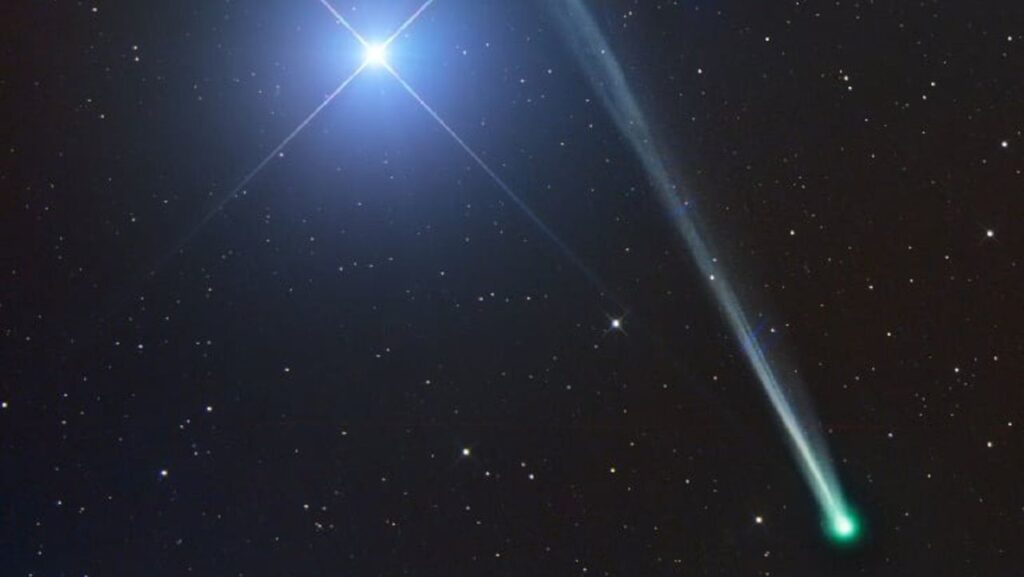
A newly discovered comet, designated as C/2025 R2 (SWAN), is set to dazzle stargazers this October as it approaches Earth. Discovered by Ukrainian amateur astronomer Vladimir Bezugly on September 10, 2023, the comet has rapidly brightened, raising hopes that it may become visible to the naked eye around its closest approach to Earth on October 21.
As C/2025 R2 (SWAN) nears the Sun, the heat causes frozen materials within its nucleus to undergo sublimation, transitioning from solid to gas. This process creates a gaseous envelope that is blown away by solar winds, resulting in a spectacular tail of dust and gas that reflects sunlight. If conditions allow, this cosmic display could be visible without the aid of telescopes.
The comet reached its closest point to the Sun, known as perihelion, on September 12, passing approximately 47 million miles from the Sun—about half the average distance of Earth’s orbit. Recent observations from the Comet Observation Database (COBS), managed by the Crni Vrh Observatory in Slovenia, indicate that its brightness has reached a magnitude of 5.6. This suggests that C/2025 R2 (SWAN) may already be visible as a faint naked-eye object under perfectly dark conditions.
Finding Comet C/2025 R2 (SWAN) in October
Throughout October, C/2025 R2 (SWAN) will be best observed in the evening sky, particularly in the hours following sunset. As the month progresses, it will sink lower on the south-southwest horizon. On October 16, the comet will be positioned about five degrees to the upper left of the star Xi Serpentis within the constellation Serpens. Stargazers can utilize mobile apps to assist in locating the comet, especially if they are unfamiliar with the night sky.
In the following week, C/2025 R2 (SWAN) will pass above the well-known “teapot” asterism in the constellation Sagittarius, moving through the stars of Scutum. By the end of October, the comet will be visible above the southern horizon, nestled between the bright stars Sadalmelik and Sadalsuud in the constellation Aquarius, with a half-lit moon illuminating the scene below.
For those eager to observe C/2025 R2 (SWAN), it is advisable to explore options for binoculars or telescopes that can enhance the viewing experience. Additionally, aspiring astrophotographers should consider guides on capturing images of comets with DSLR cameras.
As the excitement builds for this celestial event, stargazers are encouraged to share their photographs of C/2025 R2 (SWAN). Submissions can be sent to [email protected], alongside comments and details about the location where the images were taken.
With the right conditions, C/2025 R2 (SWAN) promises to create a memorable spectacle in the October night sky, captivating those who take the time to look up.







